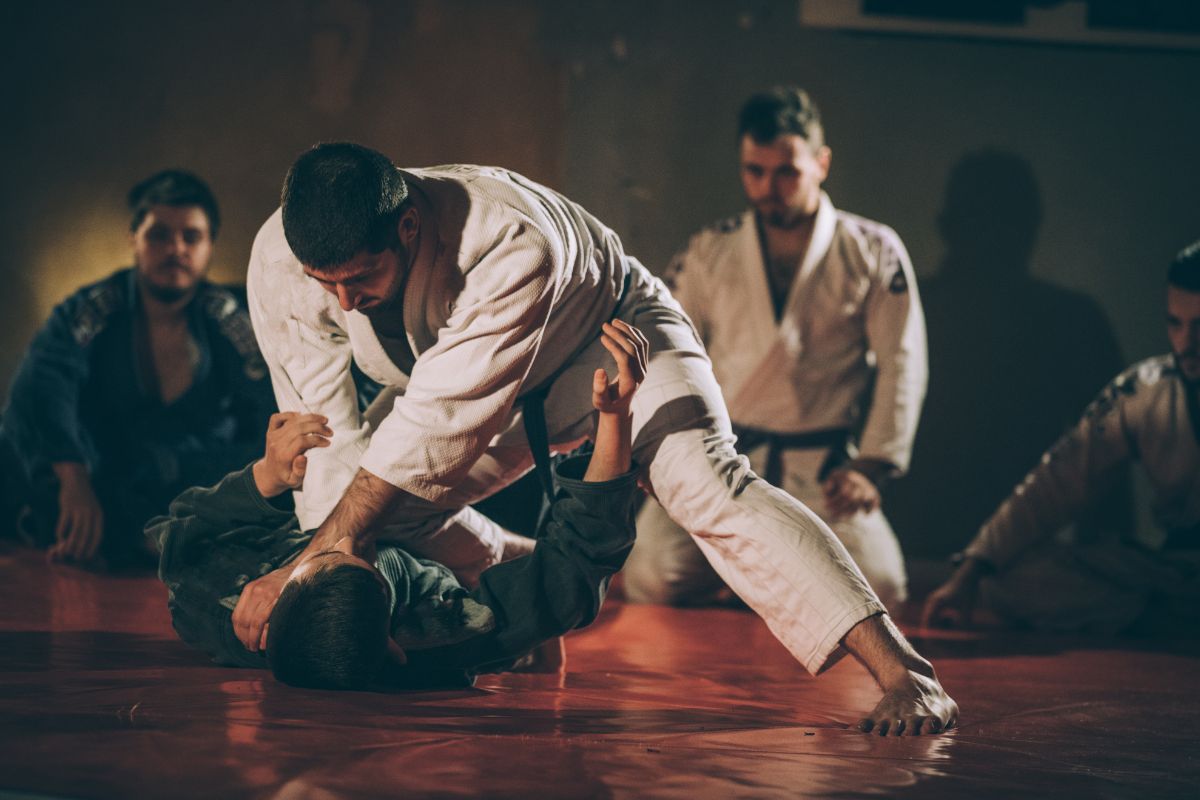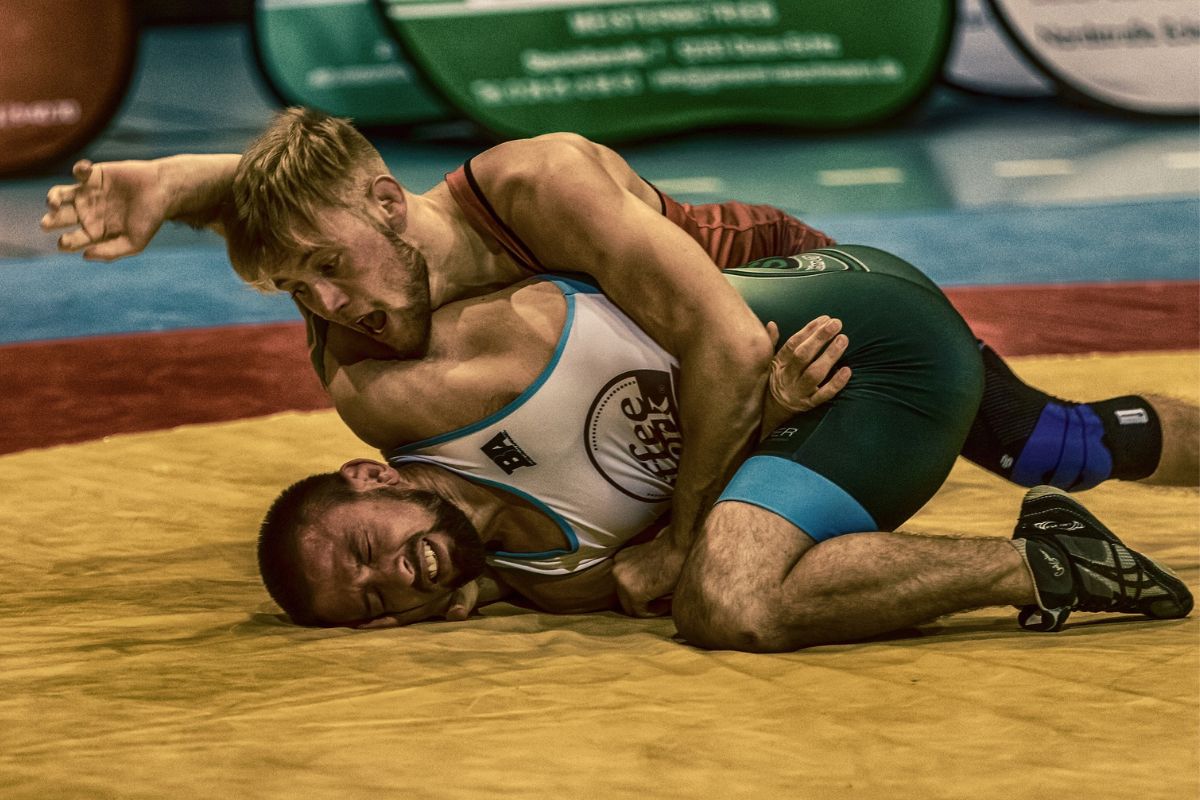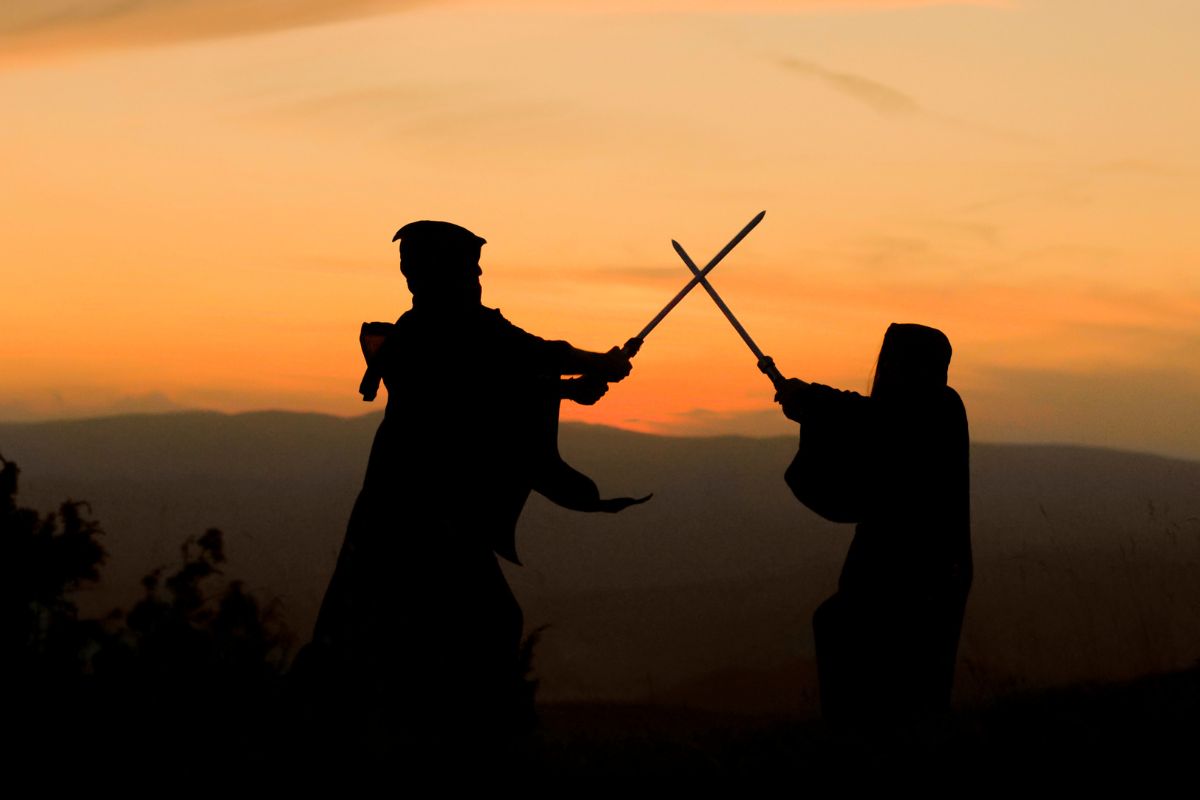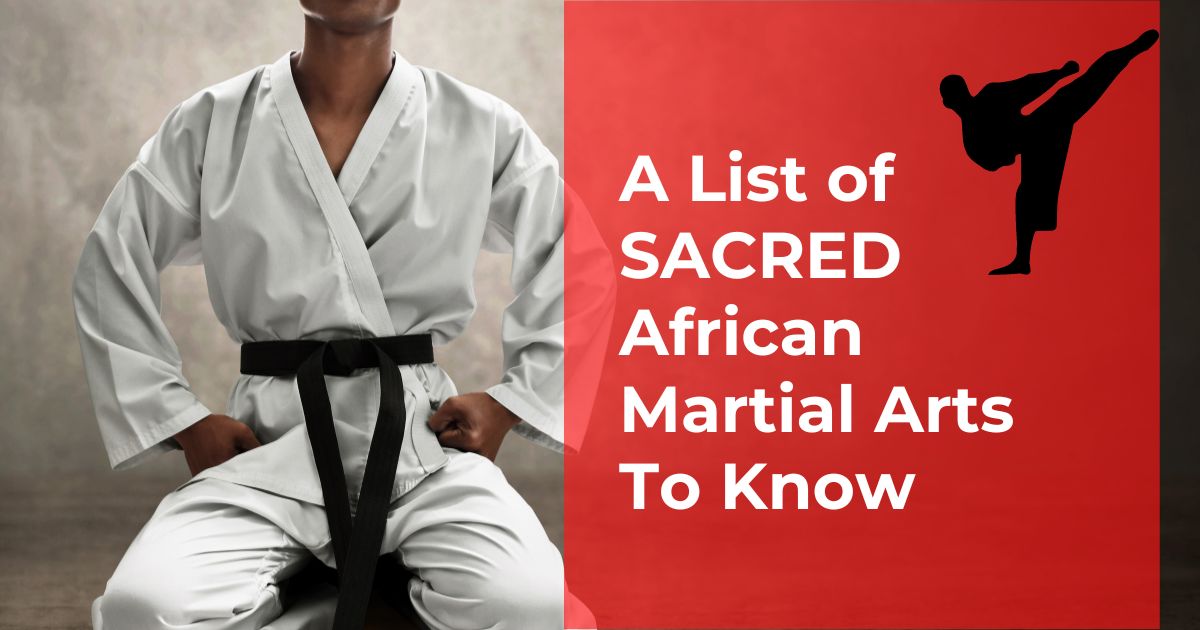What is African Martial Arts?
African martial arts is a unique fighting style based on African history, traditions, and culture.
The fighting styles have evolved and are different based on the region of origin. Most fights involve hand-in-hand combat, but the use of weapons is also popular, depending on the style.
African martial arts originally developed training for protection during a war. However, today, it’s a form of entertainment and fun among friends and sometimes a competition.

African Martial Arts Style
There are various African martial arts styles, and the fighting usually involves two or more opponents, grappling, kicking, wrestling with bare hands, or using weapons such as sticks.
Let’s explore African martial arts, their origin, and their influence.
Dambe
Dambe is a martial arts technique from West African Hausa people from Chad, Niger, and Nigeria. The martial arts combines boxing and kicking, and the goal is to overcome the competitor within three rounds. There is no time limit, and a fight ends under any of these three conditions
- There is no activity
- A fighter or officiator stops the fight.
- The hand, body, or knee of a fighter touches the ground.
Traditionally, the fight was between traveling butcher and fishermen caste groups during harvest festival entertainment or as preparation for war. Fighters would situate themselves in a clearing called the battlefield, and the spectators form a ring.
In the modern day, Dambe boxing is practiced by young urban youth in backyards and gyms, competing throughout the year.
Engolo
Developed in Southern Angola near the Cunene river, Engolo, also known as Ngolo, is a martial art fighting involving kicking, dodging, and leg sweeping with one hand on the ground. Engolo has similarities with Capoeira, a fighting style from Brazil.
Engolo was part of a rite of passage ritual but, in the modern day, is not associated with any tradition but an element in public and private performances.
Istunka
Istunka, also known as isgaraac, is a martial arts performance held as part of the new year in Afgooye in Somalia.
Istunka, which coincided with the harvest season, is a mock fighting between people on opposite sides of the river, symbolizing honor and protecting one’s community.
The Istunka was a tournament developed during the medieval era and celebrated annually on Somali new year and other festivals such as Nowruz, the day of the Iranian new year.
Eventually, the festival became centralized under the Sultanate of the Geledi. Later under the reign of Sultan Ahmed Yusuf, the tournament evolved whereby separate teams were formed, each team having poets, female vocalists, and dance groups for the duration of the competition.
The fighters used to wear war regalia and fought with axes, swords, and daggers. Today fighters have replaced these weapons with sticks and batons for safety reasons.
Lutte Traditionnelle
Known in English as Traditional Wrestling, is a West African form of wrestling. It is called Laamb in Senegal, Boreh in The Gambia, Evala in Togo, and Kokowa or Kokawa by the Hausa in Nigeria, Niger, Chad, and Burkina Faso.
A typical fight involves two fighters enclosed in a sandbag ring, and the goal is to throw the opponent out of the ring. A fighter can also win if they knock out the opponent off their feet on all fours.
Lutte Traditionnelle became popular in the 1980s with national and international tournaments held. The rise of popularity and competition needed a set of rules which led to the formation of the Championship of African Lutte Traditionnelle.
Lutte Traditionnelle is part of the Jeux de la Francophonie, known in English as the Francophone Games.

Moraingy
Also known as Morongue in French, is a traditional martial arts style developed during the Maroseranana dynasty (1675–1896) in Madagascar. The moraingy is a weaponless knuckle-fist fighting martial art sport.
Traditionally this was a fight for young men to judge their physical fitness and strength to test their abilities and gain prestige, and the elderly would be the judges to determine the winner.
In the modern era, both women and men between 18 and 35 years are allowed to compete.
A typical match will last one round and will end if any of these happen:
- A fighter faints
- A fighter leaves the fighting arena
- Fighters are unable to defend themselves or fight further
- A fighter is seriously injured
- The fighters are unequal, usually by weight and height.
Typically the fight includes where fighters will engage in dances before and between the battles with crowds cheering on the sidelines.
The art is now popular in neighboring Indian Ocean islands, including Réunion, Mayotte, Comoros, Seychelles, and Mauritius.
Musangwe
Musangwe is bare-knuckle fist-fighting by the Venda from Zimbabwe and South Africa. The sport was originally a way to gain respect and entertainment among the Venda people.
A person could challenge someone who was disrespectful to them, and the person challenged had no choice but to fight. When one opts out, they would receive a fine or even get beaten by the elders.
The fight has no set time limit and will only end when one of the competitors concedes defeat. The winner received whatever the chief or headman saw fit.
Nguni Stick-Fighting
Nguni Stick-Fighting is also known as donga, or dlala ‘nduku, which translates into playing sticks.
This martial art, developed by Nguni teenage herd boys in South Africa, involved two fighters, each armed with two long sticks, one for offense and the other for defense.
Traditionally it was a fight to determine who was strong, and today, it is a wedding tradition for the two families “get to know each other,” and they would have other people join in.
A notable person who participated in Nguni Stick-Fighting is Nelson Mandela, who featured in the Discovery and BBC TV reality show Last Man Standing and in Season 1 of Deadliest War.
Nuba Fighting
Nuba fighting is a sport developed by the Nuba people from South Sudan.
Nuba Fighting has two varieties; the first is Nuba stick fighting which is similar to fighting with a spear and arrow. The opponents have to wear a little armor to avoid severe injuries. The second is Nuba wrestling which is essentially grappling by slamming the opponent to the ground. There are very few minor injuries, as this is strictly for entertainment.
Traditionally competitors would fight naked; however, in the modern day, they wear t-shirts and shorts.
Fighters train for both stick fighting and wrestling under a former fighter, and the competition will include dance, learning traditional music, and drinking milk. Beer and promiscuity are not allowed due to Islamic Sudanese laws.
Nuba fighting is not popular in the cities, but city dwellers will patronize to keep in touch with tradition. Tournaments coincide with the harvest season and include former champions telling stories, food, music, and dance.
Senegalese Wrestling
Senegalese Wrestling is a sport traditionally performed by the Serer people from West Africa. Today Senegalese Wrestling which is part of Lutte Traditionnelle, has become a national sport in Senegal and The Gambia.
Historically, wrestling was part of the preparation for war, to fight boredom, court wives, prove strength, and as a sign of honor to the village. The goal is to throw an opponent to the ground by picking them up and throwing them to the ground.
Senegalese wrestlers train hard to develop strength, although there is a belief that a person wins due to luck or rituals, widely practiced among fighters.
This form of martial arts is prevalent in Senegal, where champions become celebrities. A significant number of young people drop out of school to pursue the sport, with notable names speaking up against it stating school is more important.
Senegalese wrestling is the influence behind Danmyé, also known as Ladja martial art, which was brought to Martinique by enslaved people to preserve the art.
Tahtib
Tahtib is a form of martial arts traditionally called fan a’nazaha wa-tahtib, which translates into “the art of being straight and honest through the use of a stick.” The tahtib has two components: martial arts and dance.
The art in English is known as stick dance, cane dance, stick-dancing game, or ritual mock combat.
The Tahtib performer uses a stick called an asa, asaya, assaya, or nabboot, which is usually 4 feet (122 centimeters) long.
The martial arts tahtib is flailing the stick at high speeds to hit the head of the counterpart. The opponent has to protect their head while attempting to beat their opponent. A fighter has to hit the opponent once on the head in a clear shot or three taps on the body to be declared a winner.
The tahtib dance is a performance with music featuring a tabl which is a bass drum, and mizma, which is a folk oboe.
The performer, who wears a simple baladi dress, will include dancing while balancing the stick on a cane on the head, hip, or shoulder.
The tahtib was originally a men-only performance; however, in the modern day, women are also allowed to participate.

The Origins of African Martial Arts
The origins of African Martial Arts vary in technique, style, and goal depending on the region.
The core reasons for African Martial Arts were to prepare for war, a test of strength, a show of honor in one’s community, a way of courting and wooing women, and entertainment.
The Word’s Out!
African Martial Arts were a way of life from various parts to learn how to protect their communities and entertainment.
There are a variety of African Martial Arts techniques, from hand-to-hand wrestling and those that use weapons, usually sticks.
African Martial Arts are becoming popular competitive sports and, in some cases, include music and dance as part of the performance.
Traditionally, African Martial Arts were strictly for men, but the sport has evolved, and women are now participating as competitors.

